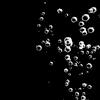Using hot water in a bong can create smoother, more humid hits by increasing filtration and reducing throat dryness. However, it may affect flavor and strain terpene profiles. Only use hot water with thick borosilicate glass to avoid thermal shock and breakage.
There’s a lot of debate around using hot water in a bong, and most of it comes from people who haven’t tried it properly. If you dial in the water temperature, use the right type of glass, and keep your piece clean, it can be a game changer. Personally, I noticed three things right away:
-
My throat didn’t feel torched after a long session
-
I could inhale deeper without the usual coughing fit
-
The warm vapor didn’t dry out my mouth or lungs
If you're thinking about giving it a shot, don’t use a cheap, thin-walled piece. Try something with the wall thickness to handle hot water without flinching and the right chamber size to hold temperature without killing flavor.
In this article, we’ll look at what bong water really does, how temperature changes the hit, and what kind of glass is built for the job. If you're wondering whether hot water is just a weird trick or something worth trying, you're about to find out.
A Bong Is Not a Bong Without Water
Every bong relies on water to do its job. It’s not optional. Water is what turns harsh combustion into something you can actually enjoy. Whether you’re experimenting with temperature or just sticking to the basics, getting this part right makes more difference than most people realize.
The Role of Water in Every Hit
When smoke passes through water, the temperature drops quickly. That reduction is what stops it from burning your throat or irritating your lungs. It’s a physical reaction that softens the edge of the hit and makes it more comfortable to inhale.
Filtration is the second part. As the smoke travels through the water, ash, burnt plant matter, and heavier particles get trapped. The result is a cleaner, smoother draw that doesn’t taste like whatever just got torched in your bowl.
It won’t remove everything, but it does enough to noticeably improve the experience.
Water also adds moisture. Without it, the smoke is dry and irritating, especially during longer sessions. Moisture gives the inhale more weight and helps reduce that scratchy feeling you get with dry pipes or underfilled chambers.
Proper Bong Filling 101
Water level needs to be just right for a bong to work properly. The goal is to cover the bottom of the downstem just enough so that every hole or slit is submerged.
That’s what creates the bubbling and filtration effect. If you add too much, it pushes into the neck and ruins the pull. If you don’t add enough, the smoke skips the water and goes in raw.
Filtered water is worth using. Tap water can carry chlorine and minerals that throw off the flavor. With hot water, this becomes even more noticeable, since heat amplifies those tastes.
Keeping it clean and filled right is the baseline for every good session.
Mastering the Temperatures
Water temperature changes more than comfort. It shifts the entire feel of a hit. Most people think of cold water as the default, but that doesn’t mean it’s always the best option.
The truth is that you’re choosing between two different kinds of sessions. One gives you cleaner flavor, the other gives you smoother inhales. You don’t get both.
Warm vs Cold: You Get Something and You Lose Something
Cold water gives you sharper flavor. It preserves terpenes better and keeps the smoke dense. Each hit feels more defined, and the taste stays closer to what came out of the bowl.
But that clarity comes at a price. Cold water pulls moisture out of the air inside the chamber, drying out your throat and increasing irritation.
That makes longer hits harder to take, especially for people with sensitive lungs.
Hot water softens the hit but dulls the flavor. The added humidity helps reduce coughing and throat dryness, but it also mutes the taste. The warmer the water, the more it blends the flavors together.
Instead of bright, punchy notes, you get a smoother but flatter profile. Some people describe it as rounded, others say it just tastes washed out. Either way, it’s not as crisp.

How Cold Water Works
Cold water drops the smoke temperature fast. That sudden change creates thick vapor and produces that familiar bubbling and “snap” at the end of a pull.
But it also increases condensation inside the bong, which leads to more resin buildup and can trap cannabinoids before they reach your lungs.
What Hot Water Actually Does
Hot water forms smaller bubbles. That increases surface area and gives the smoke more contact time with the water, which can improve filtration. The moisture makes it easier to inhale, especially for people with asthma or sinus issues.
But along with that softness comes a loss of flavor intensity. Some of the strain’s character gets blurred, especially in larger hits.
No matter the temperature, water still filters and cools the smoke. What changes is the balance between sharpness and comfort.
The Pros & Cons of Using Hot Water in Your Bong
Some people reach for hot water out of curiosity. Others do it because cold hits are starting to wear them down. Either way, the first session is usually a surprise. It’s not just warmer. The entire feel of the smoke changes. The way your body reacts changes. Even the cleanup feels different.
What Works Better with Hot Water
The most obvious benefit is how it treats your throat. Cold smoke can hit hard in winter or dry environments. Hot water brings humidity into the mix, which makes each inhale feel less abrasive. It’s not just smoother. It’s easier on the chest.
That’s especially helpful if you’ve got asthma, allergies, or anything that already makes breathing a challenge.
Some smokers say hot water also changes how terpenes hit.
Instead of sharp citrus or pine notes, you get warmer, fruitier tones. Whether that’s a good thing depends on the strain and your own preference, but it’s a noticeable shift.
If you’re dealing with dry air or just want a session that doesn’t leave your throat wrecked, hot water can give you that. It’s not subtle. You’ll feel the difference after the first pull.
What to Watch Out For
Hot water also brings its own issues. Steam helps some people, but others say it triggers coughing more than cold. That extra humidity can hit the lungs harder if you’re not used to it.
Dirty glass is a problem here too. Heat amplifies flavor. If your bong isn’t clean, the water won’t just taste off. It’ll make the entire session feel stale.
Another downside is the smell. Hot water pulls more resin into the water and kicks up more odor fast. You’ll notice the water turning yellow quicker, and the funk will linger unless you rinse right after the session.
Tips to Nail It Just Right
To get the best out of hot water, it needs to be clean, hot enough to produce steam but not scalding, and paired with the right setup. Here’s what makes the difference:
-
Use filtered water to avoid chlorine or mineral taste
-
Heat to the level of a warm bath, not boiling
-
Try with heavy terpene strains that can hold up to the warmth
-
Add ice to the neck for a cooling finish on a warm inhale
-
Clean your piece more often to keep flavor from going flat
Can Hot Water Crack Your Bong? Depends on Your Glass.
Most people don’t think about glass tolerance until something cracks. Heat can do that if you’re careless. A sudden change in temperature puts stress on the material, and if the walls are too thin or the joints aren’t built for it, the entire piece can fail.
That’s thermal shock, and it happens more often with cheap production glass that was never designed to handle real heat in the first place.

Thermal Shock is a Real Danger
Hot water doesn’t need to be boiling to cause damage. If your piece is cold and you suddenly pour in hot water, that shift can create microfractures. These may not be visible right away, but they weaken the structure over time. After a few sessions, the damage spreads and the crack finally shows up.
Even moderate heat will accelerate wear if the joints or welds weren’t made well.
Some percolators are especially vulnerable. Thin trees, poor welds, or sloppily cut slits will fail under repeated exposure to temperature changes. That doesn’t mean you need to avoid hot water altogether. It just means you need to know what your bong is made of.
Thick Ass Glass: Built for Hot and Cold
TAG pieces are made from thick borosilicate with wall thickness up to 9 millimeters and bases as thick as 16. The joints are reinforced. The welds are designed to handle repeated use. If you want to experiment with hot water, you need something that won’t stress or fracture under normal use.
These three options are ideal for the job:
-
16" Fixed 16-Arm Tree Beaker Bong
High diffusion with a sturdy base. A good choice if you want smoother, filtered hits from warm water while maintaining solid airflow
.
-
18" Super Thick Beaker Bong
Classic shape with extra glass thickness. It holds heat well and stands up to repeated temperature shifts without warping or cracking.
-
19" Double Showerhead w/ Helical Dome Splash Guard
Large volume, solid airflow, and plenty of cooling potential. This piece is built to take anything you throw at it.
Hot Water Is a Niche Move That Could Surprise You
Hot water hits different. It’s not something you use every time, but when it’s cold out or your throat’s already beat up, it makes a weird amount of sense. You lose a little sharpness in the flavor, sure, but what you get back in smoothness is hard to ignore. Some days, that trade feels worth it.
If you’re gonna try it, just don’t risk it with thin glass. Use something solid that won’t crack when the temp shifts. That’s kind of exactly what Thick Ass Glass was founded to do.
Want to mess around with it yourself? Check out the bong collection at Thick Ass Glass site and grab something that can take the heat.



